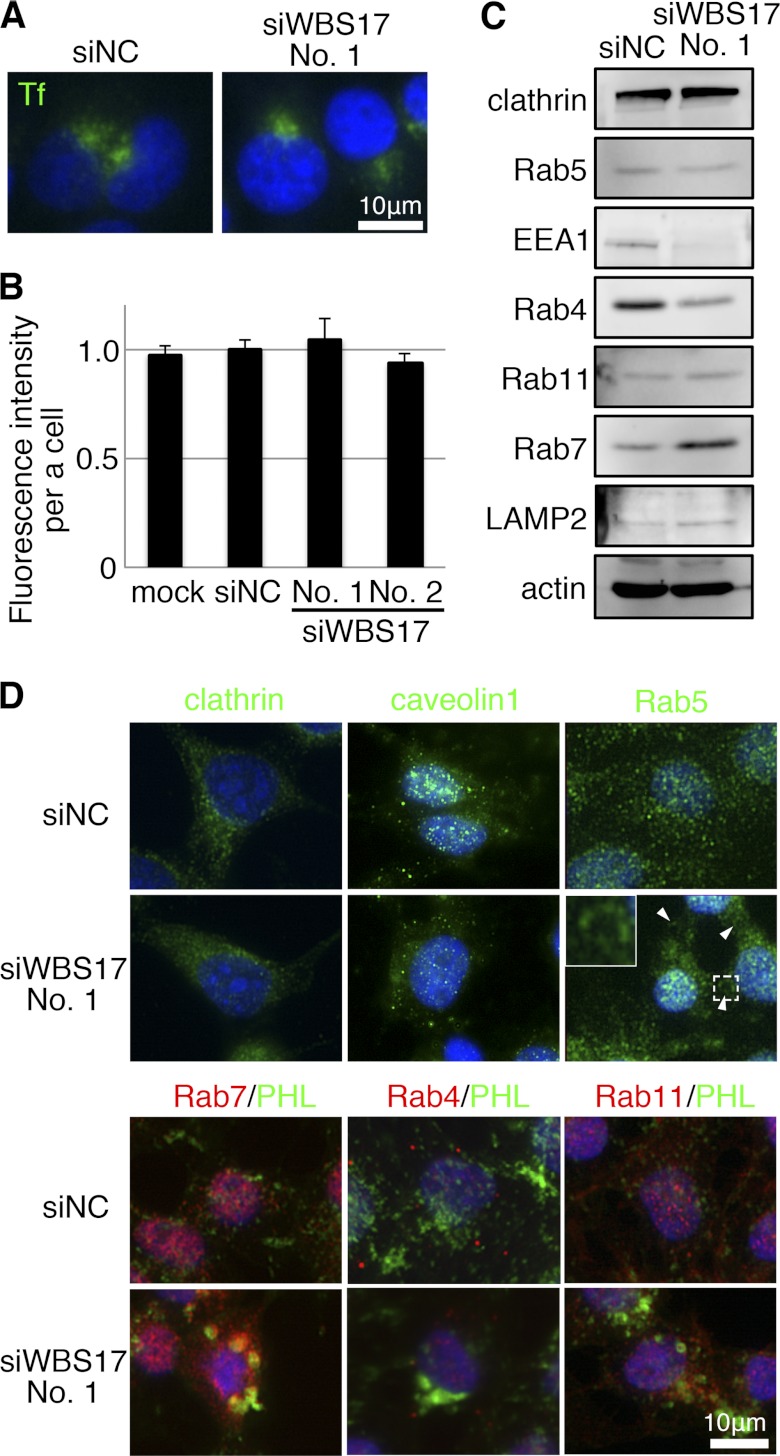FIGURE 9.
Suppression of WBSCR17 does not affect clathrin- and caveolin-dependent endocytic pathways. A, clathrin-dependent endocytic pathways. A fluorescein-conjugated Tf incorporation assay was performed to detect clathrin-dependent endocytosis. B, determination of Tf incorporation by flow cytometry. The suppression of WBSCR17 did not affect the Tf incorporation significantly. Data shown represent means ± S.D. (error bars) of three independent experiments. C, Western blot analysis of endosomal and lysosomal markers. clathrin, clathrin heavy chain; Rab5, an early endosomal marker; EEA1, an early endosomal marker 1; Rab4, an early recycling endosome marker; Rab11, a late recycling endosome marker; Rab7, a late endosomal marker; LAMP2, a lysosomal marker; actin, a loading control. The expressions of clathrin heavy chain, Rab5, and Rab11 were not affected by the knockdown of WBSCR17. By contrast, in the WBS17KD cells, there were an increase in Rab7 and a decrease in Rab4. D, labeling of the cells with a lectin and antibodies to the endosome markers. No changes were observed for clathrin and caveolin. Rab5 was associated with the large vesicles in WBS17KD cells (indicated by arrowheads). The top left corner of the Rab5 image of the knockdown cells is a magnified image of the boxed area. PHL-positive staining in the WBS17KD cells was positive for Rab7.

